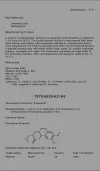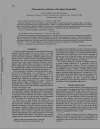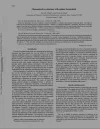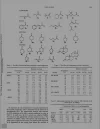Navigation
Install the app
How to install the app on iOS
Follow along with the video below to see how to install our site as a web app on your home screen.
Note: This feature may not be available in some browsers.
More options
Style variation
Guest viewing is limited
- You have a limited number of page views remaining
- 4 guest views remaining
- Register now to remove this limitation
- Already a member? Click here to login
You are using an out of date browser. It may not display this or other websites correctly.
You should upgrade or use an alternative browser.
You should upgrade or use an alternative browser.
Test e lab synthesis
- Thread starter Rand
- Start date
maleficarum
New Member
considering the relative ease and availability of high purity test e raws, why go through this effort?
Post count and likes.considering the relative ease and availability of high purity test e raws, why go through this effort?
I did this in 2014 just to test my knowledge gathering skills. Its been sitting in my computer folder alongside other drugs.
I never used it, cuz pharma didn't hire
If there's no demand the topic will naturally die off
The next post will be the sort of the keystone step imo.
Will post if the number of likes increases
Just post it stop being a drama queenWill post if the number of likes increases
Starting material is simple to make from dhea through oxidation
You know what aldehyde and ketone means?
Aldehyde is in general more reactive because of less steric hinderence. There is teo R groups attached to ketone while aldehyde has one R group and one hydrogen which is way smaller.
4-ad does not contain any aldehyde. You are mixing everything together
Aldehyde is in general more reactive because of less steric hinderence. There is teo R groups attached to ketone while aldehyde has one R group and one hydrogen which is way smaller.
4-ad does not contain any aldehyde. You are mixing everything together
That is true, but in this case the ketone involved is an enal. That's a conjugated bond.You know what aldehyde and ketone means?
Aldehyde is in general more reactive because of less steric hinderence. There is teo R groups attached to ketone while aldehyde has one R group and one hydrogen which is way smaller.
4-ad does not contain any aldehyde. You are mixing everything together
So yes there is a difference.
We are not making test from simple acetone or aldehyde.
You have swiftly turned a cyclic compound into a linear planar one, just to get a emotional reaction.
You are reducing the ketone group at 17 position. Under same conditions, the ketone group will be reduced too. If i am not wrong, the ketone group at 3 position is less reactive because of stability from the double bond than the other ketone, but still reactiveYou know what aldehyde and ketone means?
Aldehyde is in general more reactive because of less steric hinderence. There is teo R groups attached to ketone while aldehyde has one R group and one hydrogen which is way smaller.
4-ad does not contain any aldehyde. You are mixing everything together
Not me, Dale.You are reducing the ketone group at 17 position. Under same conditions, the ketone group will be reduced too. If i am not wrong, the ketone group at 3 position is less reactive because of stability from the double bond than the other ketone, but still reactive
He reports good selectivity with the conditions he tried in his paper, which is why i brought up the protective group issue.
Is simply I didn't know it was needed.
If it's needed it's good to know
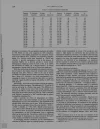
Page 3
Mate, the study compares aldehyde with ketone. Not ketone with ketoneNot me, Dale.
He reports good selectivity with the conditions he tried in his paper, which is why i brought up the protective group issue.
Is simply I didn't know it was needed.
If it's needed it's good to know
View attachment 303376
Page 3
I am understanding you wrong correct me
The introduction of the paper states what you saidMate, the study compares aldehyde with ketone. Not ketone with ketone
I am understanding you wrong correct me
But this is expanded to compare the other carbonyls. I think the misunderstanding is i am referring to 4AD, which is only has an enal and a ketone. Since my thread subject is about test only, 4i is what i focus on.
Also because i keep feeding the publication dripwise for post count and likes.
Which is why 4i cannot be understood in context yet
Page 4
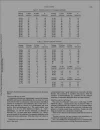
Page 5

You can see the selectivity of the ketone over the ketone over the enal in page 4. 97%. Of course someone has to reproduce this in a lab to check.
There is no protection procedure in the method. Which is why i remarked the difference in @mochul's method.

You can see the selectivity of the ketone over the ketone over the enal in page 4. 97%. Of course someone has to reproduce this in a lab to check.
There is no protection procedure in the method. Which is why i remarked the difference in @mochul's method.
Attachments
Similar threads
- Replies
- 18
- Views
- 480
- Replies
- 6
- Views
- 222


